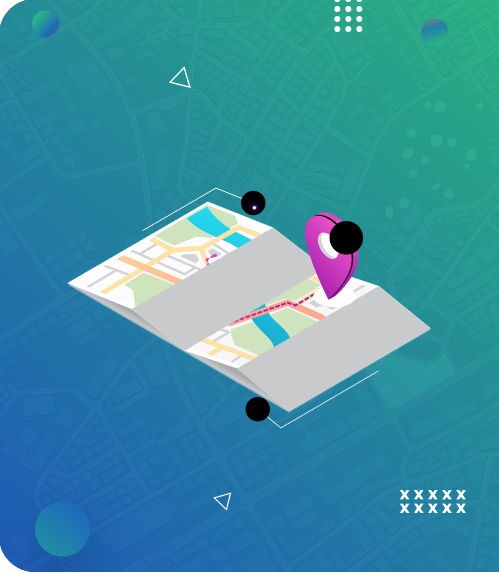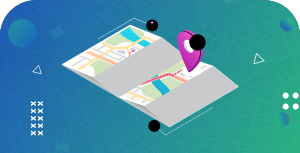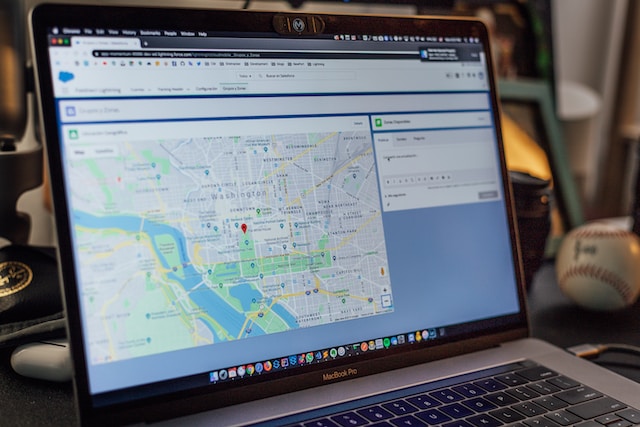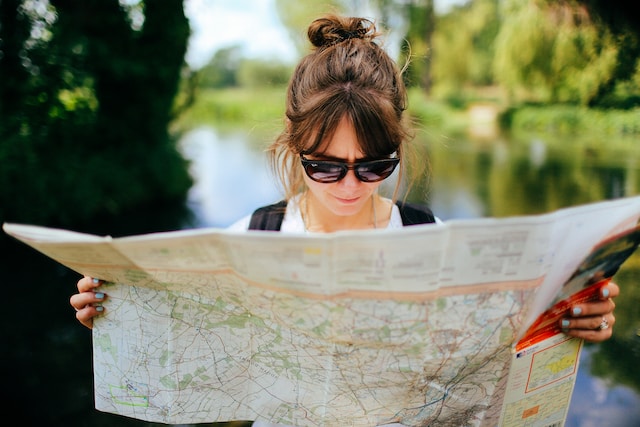
Maps are the go-to guides for navigating lands and seas. They are the graphical representation of the world or parts of it. Many explorers and navigators utilize maps to explore the unknown and discover new places. Navigation becomes impossible without them.
With advancements in technology and space exploration, there are GPS satellites that can accurately map out the Earth’s geography. However, there is a challenge. How can we fit thousands of square kilometers of the Earth’s landmass on paper, even on our devices?
In search of the answer, we discover that humans can use map scale. When applied correctly, this scale reduces huge land masses into smaller ones on maps. This discovery is revolutionary as navigation apps utilize them to provide accurate navigation routes for personal and business use.
This article provides details regarding map scale and its types. It also compares the ones you can use when building custom maps for personal or business needs.
Map Scale Definition
We have varied perceptions of objects in our pursuit of art and design. Thus, we utilize the principle of scale, which is the relative size of an object compared to another. This principle is helpful as we try to understand the map scale definition.
It is noteworthy that the earth’s surface area is 510 million km2. If you open a popular GPS app on your mobile phone, you can discover how smaller the world appears. This is possible by implementing a proper map scale.
Map Scale is the ratio between a smaller unit of measurement, say an inch or centimeter, and a larger unit, like a mile or kilometer. It aims to show the relationship between the distance on maps and the Earth’s distance. Thus, without a proper scale, you falsely perceive the distance between two points when examining a map.
Many map developers utilize them to either scale up or down a geographic location. Larger scales (1:25,000) provide more precise geographic location features. However, with smaller scales (1:1,000,000), you can compress more features into the map area with less attention to details.
What Is Mapping Scale?
Now that you understand a map scale, you may wonder what a mapping scale is all about. They mean the same thing. A mapping scale is simply the ratio of an Earth’s distance to the same distance on the map.When mapping, a scale is often attached to the bottom end of the map. Without this visual feature, users may have difficulty understanding the mapping ratio used by the map developers.
Three Types of Map Scales
Map providers have three main ways to depict a map scale. Do well to consider each of them and identify which one your preferred navigation map uses.
- Bar Scales
This kind of scale is in a graphic format. It usually features a bar line representing real-world units such as miles or kilometers. The map then utilizes intervals (say 100, 200, 300) so you can measure the bar line and multiply it to give the actual size in the real world. Then, the map references the bar scale, like 1 inch represents 500 miles. So, when you measure ten (10) inches between two points on the map, that is (500 x10) miles in the real world. - Representative Fraction (RF)
When considering the map scale of a map, it can easily mislead your cartographic knowledge. Many have this misconception that the larger the ratio, the bigger the map scale. However, that’s not the case, so you should consider Representative fraction.
Representative Fraction (RF) appears in ratios or fractions. It shows how reduced the Earth is on a physical or digital map. For instance, for a map with a scale of 1:10,000, every landmark feature is one ten-thousandth of its actual size in the real world.
RF can also exist as a fractional scale, for instance, 1/10,000, 1/25,000, etc. The beauty of representative fractions is that this scale type works in any unit you choose, either the conventional metrics or the International System of Units (SI unit). - Verbal Scale
This scale type is popular among map developers as it expresses the scale used in a map in written words. For example, suppose a particular maps read one inch represents 1,000 miles. In that case, every inch measured on the map corresponds to 1,000 miles on the earth’s surface.
Map Scale Examples in Navigational Maps
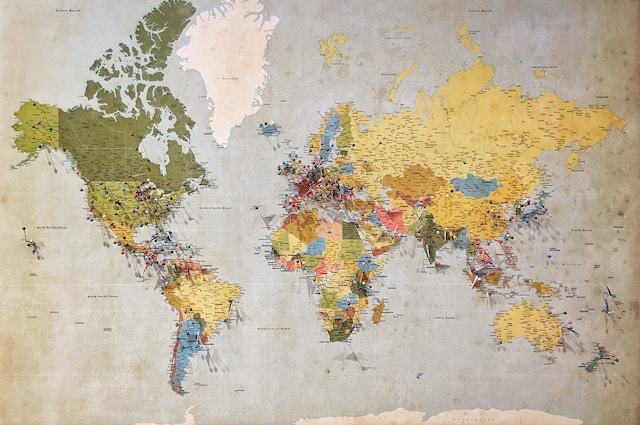
When measuring actual distances on the Earth’s surfaces, there are several land and sea features must be considered. These features make it nearly impossible for map developers and providers to use a “one size fits all” model. Thus, it is necessary to compare a few map scale examples.
There are three categories of map scales: smaller scale, medium, and larger scale. The rule of thumb in understanding these varying scales is that the larger the RF denominator, the smaller the map size.
Smaller Map Scale
This category of map scale is usually in larger ratios, like 1:1,000,0000, 1: 5,000,000, and even 1:∞. There is no attention to detail when using this scale category, as map providers set out to cram as many features into the map area.
These scales usually employ large representative fractions. Nautical charts often utilize smaller scales where great details are not needed. So, they are helpful for offshore navigation, its surroundings, and shorelines.
Another excellent example of a smaller scale is the map of the Earth. This map features all the continents, oceans, and islands without attention to detail.
Medium Map Scale
This category of map scale provides more details while fitting more land and sea features into the map area. They are usually between 1:1,000,000 to 1:200,000. Map developers employ medium scale in topographical maps.
Map developers utilize these categories of scales when mapping out a country or a group of remote islands. Thus, it allows them to pay more attention to details regarding roads, railroads, shorelines, terrain, inland lakes, and surrounding oceans.
Large Map Scale
This map scale covers a smaller area of a geographic location while showing more details than smaller and medium scales. They are practically helpful in maps of small towns, offering major and minor transportation routes, street routes, footprints of buildings, vegetation, and other necessary details.
Modern businesses utilize larger scales to plan their distribution chain to their customers in cities, towns, and surrounding neighborhoods.
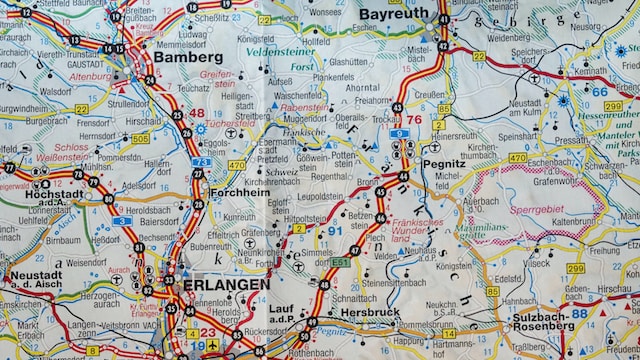
Large Map Scale vs. Small Map Scale: Learn the Difference
As discussed earlier in this post, map scales are essential when considering maps of a geographic location, either in an atlas or a mobile device. They exist in different sizes, from the map of the Earth to the map of your neighborhood. The two scales that stand out when mapping locations of the world are large and small.
It is essential to check out large map scale vs. small map scale comparisons to know which applies to your business.
Scales Defined
A large map scale is applicable in mapping out a limited area while providing the necessary details in the map. Since these scales pay attention to detail, they offer better visual aids on maps. For example, you can check out building footprints, nearby districts, major and minor transportation routes, biking routes, terrain, and vegetation.
On the other hand, a small map scale does the exact opposite. It maps out a wider area of a geographic location, providing fewer details. This scale is particularly useful in understanding the general idea about a location like a continent and even the world map.
The Use of Representative Fraction (Rf) In Map Scale
Representative fractions are in the form of a:b. The number to the ratio’s right is smaller for a large scale. For example, large scales can have an RF of 1:10,000, which implies that every distance shown on the map is one-ten-thousandth of the actual distance in the real world.
Large map scale usually utilizes an RF of 1:25,000 or larger (the ratio reduces to 1:1). In contrast, the number to the right of the RF is larger for a small scale. For instance, a smaller scale can have an RF of 1:1,000,000. It implies that every feature or location measured on this map is one millionth the size in the real world. Thus, you can fit more area through this scale without providing much detail.
Map Production
Maps that use larger scales are more expensive to produce. How so? When utilizing larger map scales, there is greater attention to detail. Also, large scales require essential features like major highway routes, building footprints, and landmark locations.
Since larger scales display limited geographic areas, you need several maps of other regions to piece them together. This process makes them more expensive to produce.
When maps utilize smaller map scales, they do not require a precise level of detail. As such, they can accommodate larger areas, making these maps less expensive.
View Test Map in a full screen map
Final Thoughts: Get the Right Map Provider for Your Business
What a fascinating read! Indeed, this post has helped you understand map scales, their types, and examples. Also, it considered the differences between large and small scales. These differences can help you utilize the correct map scale for your business.
You may need help developing a map for your business. In that case, you should consider Mapize, a tooling service that will help you create the perfect map.
You don’t need coding expertise before creating your maps, as Mapize will employ its software to help customize them. You can select from map styles, sizes, and scales available on Mapize. Try us out for free today and create your first custom map.

